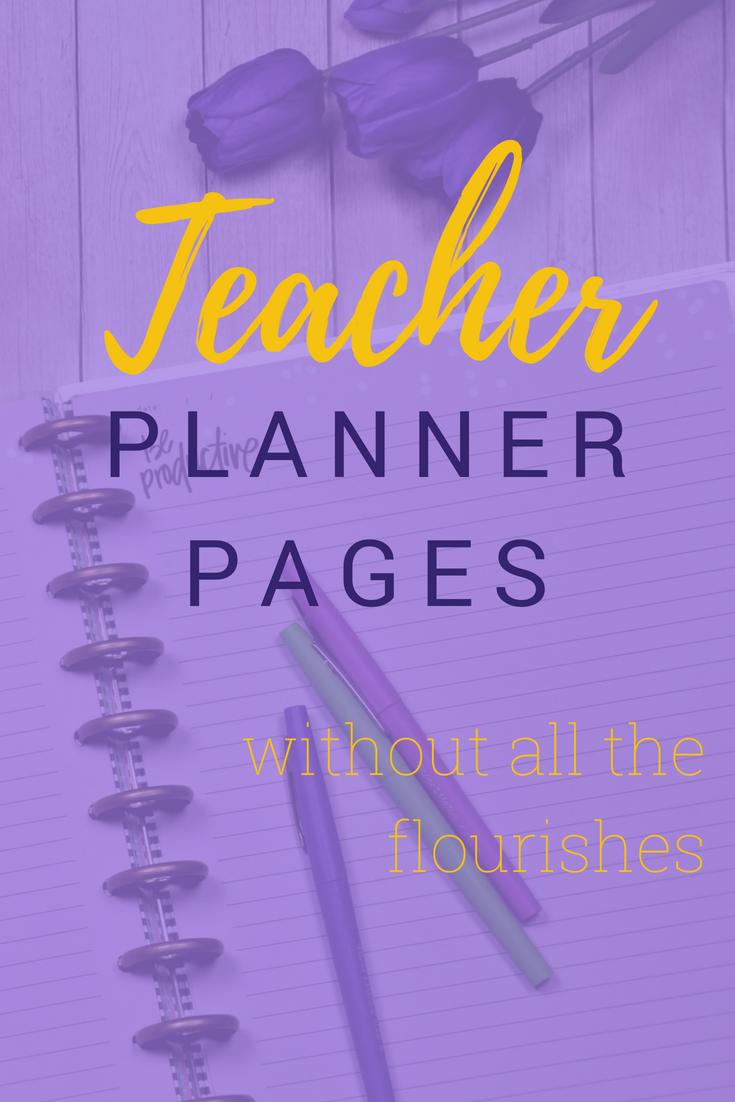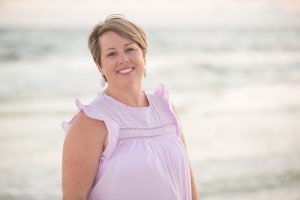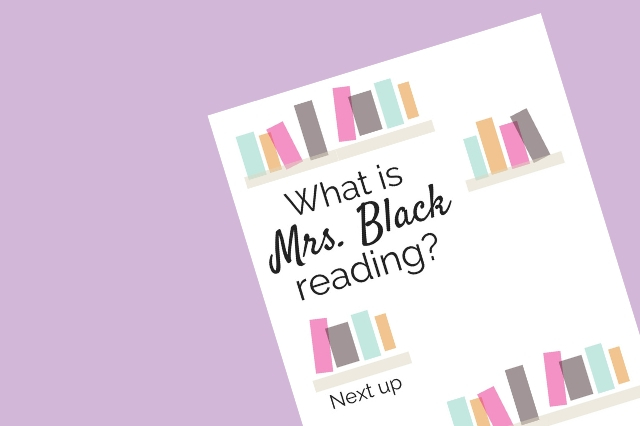
by Carly Black | Sep 11, 2018 | Classroom Solutions, Organization
At the start of the school year, I was seeing lots of posts where teachers created a classroom poster to show kids the books they were currently reading. My husband had actually done this in his classroom last year and I ran out of time then forgot to make one for myself. This year I turned to Canva.com to make my own classroom poster that would fit inside my 11×14 frame that hung just outside my door. I decided to design a poster that would allow me to write the title with a dry erase marker on the glass of the frame. This would save me from having to print covers everytime I picked up a new book to read. Which is also better for the environment.
When I shared this photo on Instagram a lot of people sent me messages asking how I had created the poster. The simplest answer was Canva. But it did take me a lot of scrolling to find the template I had used. To make this easy for everyone to duplicate I recorded a video to show you how to make your own.
Here is my finished product, along with my latest Cricut vinyl projects.

Hope this video tutorial helps! I’d love to see your projects come to life. Be sure to post them on Instagram and tag me.
If you’re interested in learning more about blogging in the classroom as I mentioned in my video join my Blogging in the Classroom mailing list. Learn how blogging can become your total package writing curriculum and give your students a voice.
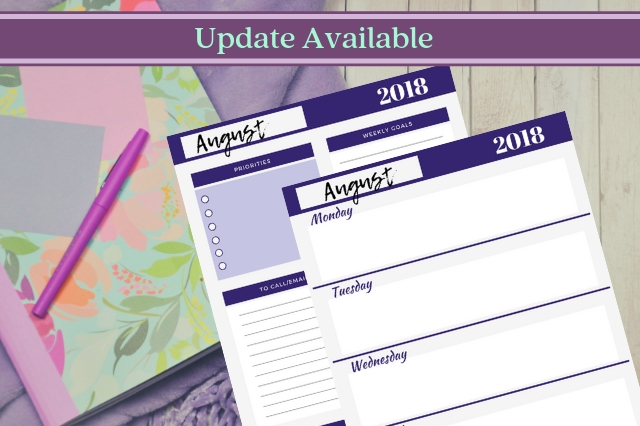
by Carly Black | Jul 9, 2018 | Classroom Solutions, Organization, Teacher Solutions
Teacher planners are a really big deal. The hunt for the PERFECT teacher planner is a fierce experience. I often equate it to trying on bathing suits. You know they aren’t going to have the absolute perfect fit for you, but it’s a necessary accessory. So you venture out asking for recommendations, trying out different styles, and finally settling on something that mostly fits.
On my personal hunt for the best planner, the frustration lies in the layout of the pages. Most teacher resources seem to be geared toward elementary teachers. Very few calendar layouts allow for teachers to plan for multiple classes within one subject area. The other things I really hate are the super small boxes! Who can actually plan within that tiny 2×2 square?
Price is also a determining factor when making a final planner purchase. I know there are teachers who swear by the Erin Condren series, but I can’t bring myself to spend that much money year after year. Plus, once again the pages that are offered don’t apply to me. If the price is that steep then I want the whole package!
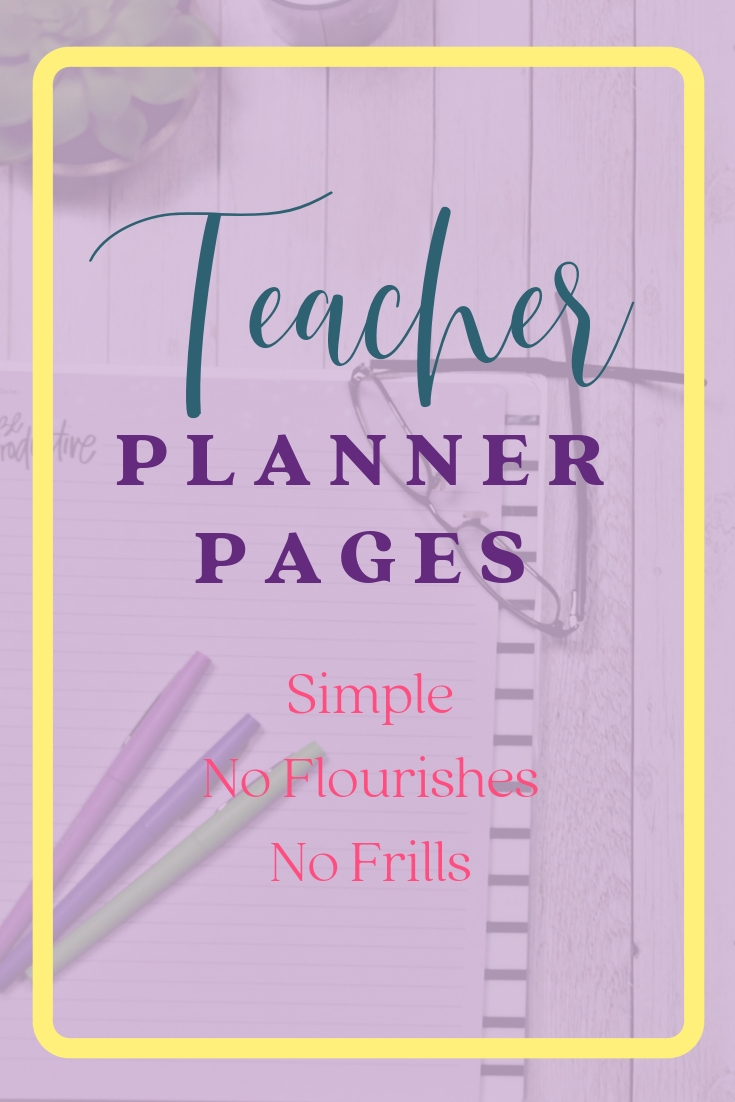
Some of the links found in this post are affiliates. This means if you make a purchase after clicking through we will receive a small compensation at no extra cost to you. Thank you in advance for your support and please know that we only endorse products we use and love.
Last summer I was introduced to the Create 365 Happy Planner for teachers. This planner style allows for some major customizing that other systems don’t allow. It uses expander rings that allow you to add pages to the planner itself. For example, you could print your district calendar and add it to the front of your planner so it’s always in a convenient place. Another great reason to use this planner with expander rings is to add your own formatted pages. Perhaps you’ve purchased some forms from a TeachersPayTeachers store; with this style of a planner, you can easily add them among your pages. The system also provides 2 pocket folders that can be added. Check out this pack of folders, checklists, stickers, and notes pages. Make sure you also grab the Big paper punch to add all the pages. There is an upfront investment, however, with all the options and ways to customize I feel it’s worthy of the cost.
I’ve been very happy with my Big Happy Planner, so much so that I bought a smaller size for keeping track of family events and meals. I never thought I would be the kind of person who decorated my calendar pages with stickers. Turns out I’m exactly that kind of person! I love sitting down on Sunday afternoons and planning each week. Choosing fun stickers to give my week a theme really helps to make Monday a day to look forward to.
Now, my husband, who is also a teacher, had a much harder time finding a good teacher planner. Most of the options are styled for women. This seems to be a common problem. The other day several teachers on Instagram commented that they struggled to find a plain, flowerless, non-script font cover option. Not every female teacher is looking for a flashy planner. So I decided to help!
If you want planner pages that are simple and you can print yourself, use the form on the sidebar to grab yours today. Choose to be added to our Teacher Tribe list and you’ll get this free download plus access to our growing resource library.
Print your FREE planner pages and go super simple with a three-ring binder. Or you can follow my lead and invest in the Happy Planner system that’s reusable year after year. Either way, these FREE printable pages should help you stay organized throughout the school year.

by Carly Black | Dec 28, 2017 | Classroom Solutions, Organization
How many of you had a new planner or personal calendar on your Christmas list? None. Me either, because for teachers the year began in August, and will end in June. Our resolutions and goals, those were set back in the fall when school was just about to start. For teachers, this time of year is not about setting new goals but evaluating the ones we set for our current school year. This is the approach I’ll be taking with my students when we return to the classroom on January 2.
Middle schoolers have a hard time seeing a full year into their futures and let’s be honest, twelve months is a long time. Young teenagers don’t want to think that far into their futures, because a lot can change for them in that amount of time. I’ve already had two students this school year leave my class because their parents decided they wanted to be living in a different state. My guess is that those students didn’t have much say in that decision. This is why I feel resolutions are not practical for middle schoolers or this teacher. From January to June 2018 they will be in middle school, but once the summer hits they take on the new title of Freshman. A very different distinction.
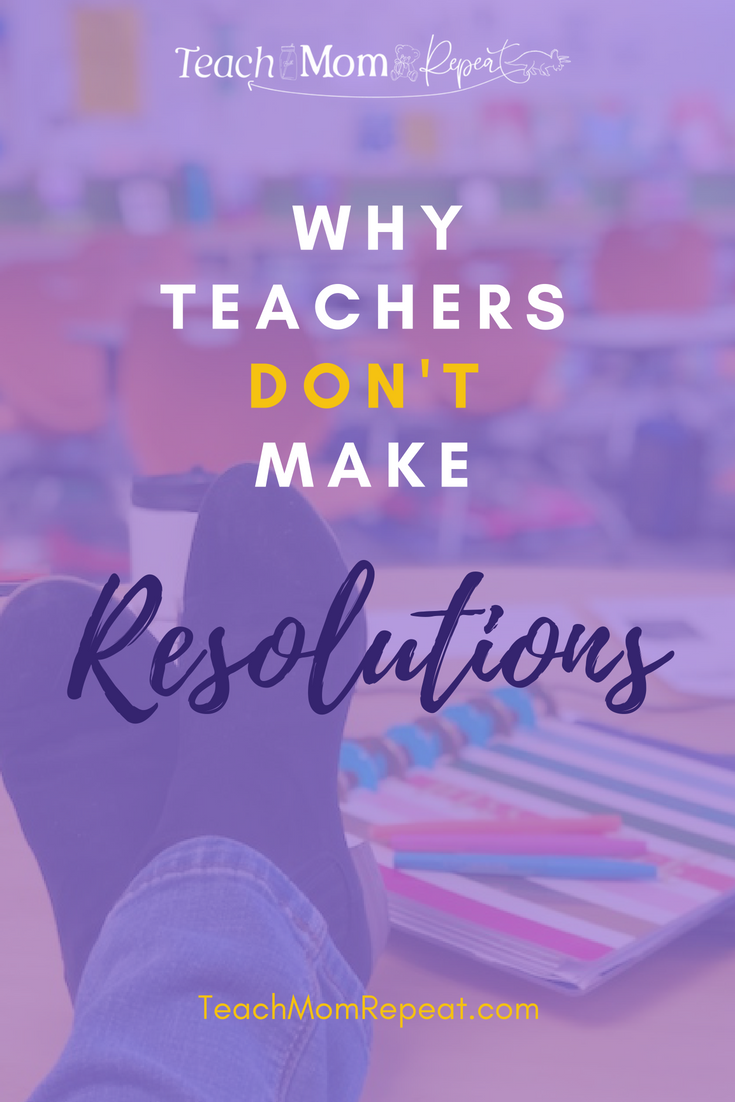
Consider my year, at the start of 2017 I was trying to figure out exactly how I could handle another 6 months nursing my daughter because pumping at school was taking a serious toll on my schedule and sanity. Today, my daughter is a fantastic eater so maybe I can chalk this year up to a success. Either way, the start of my year looks a whole lot different than the end, and that can be difficult to plan for, especially when there are two separate school years on the bookends. I like to think of January as a time to evaluate my teaching thus far and consider how we cross that school year finish line maintaining the pace. My students are keeping track of their major data pieces: AIR test, SRI tests, and CFA quarterly tests. With each score, they are writing a reachable goal for the next opportunity. They also made general reading and writing goals that could be short or long-term. We will have to start talking about what their high school schedule might look like based on how they are meeting goals. Side note, a number of my advanced students will need to seriously consider staying on the advanced track in high school; it’s been a rough first half with turning in quality writing and keeping up with reading assignments. Which is why I prefer to use this time of year as a lesson in evaluation rather than resolution. The goals have been set, now is the time to measure achievements and amend any goals to round out the school year.
I plan to ask my students to answer 3 important questions:
- What goals have you reached now that we are at the halfway mark?
- What new goals do need to set to finish the school year strong?
- What goals do you need to change or create in order to reflect the high school career you envision for yourself?
Their answers will help me have important conversations about making the middle school to high school transition. I’m new to this conversation, so any other 8th grade teachers out there with advice for helping students through this transition be sure to leave a comment.

by Carly Black | Jul 6, 2017 | Classroom Solutions, Organization, Teacher Solutions
This school year will mark my 16th year in the field of teaching. However, I’m moving up a grade which means lots of changes. I’ve successfully moved my classroom, and now it’s time to start looking at curriculum changes. The last time I taught a few classes of 8th grade ELA the Common Core Standards had not been put into place. These standards have caused a major shift in the world of educating. I’ve paid attention to where my 7th graders needed to go, but now I’ll be teaching them at that place. With different standards come different units and different stories and new colleagues to work with daily. It’s like starting back at year one. Thinking back to my actual first years, which I deemed to be the white-hot coals of hell, there was a lot of transition taking place in my life. New state, new friends, new job, new apartment, new city (a big city for a small town girl), and even though it was a hard year it was a great year, too.

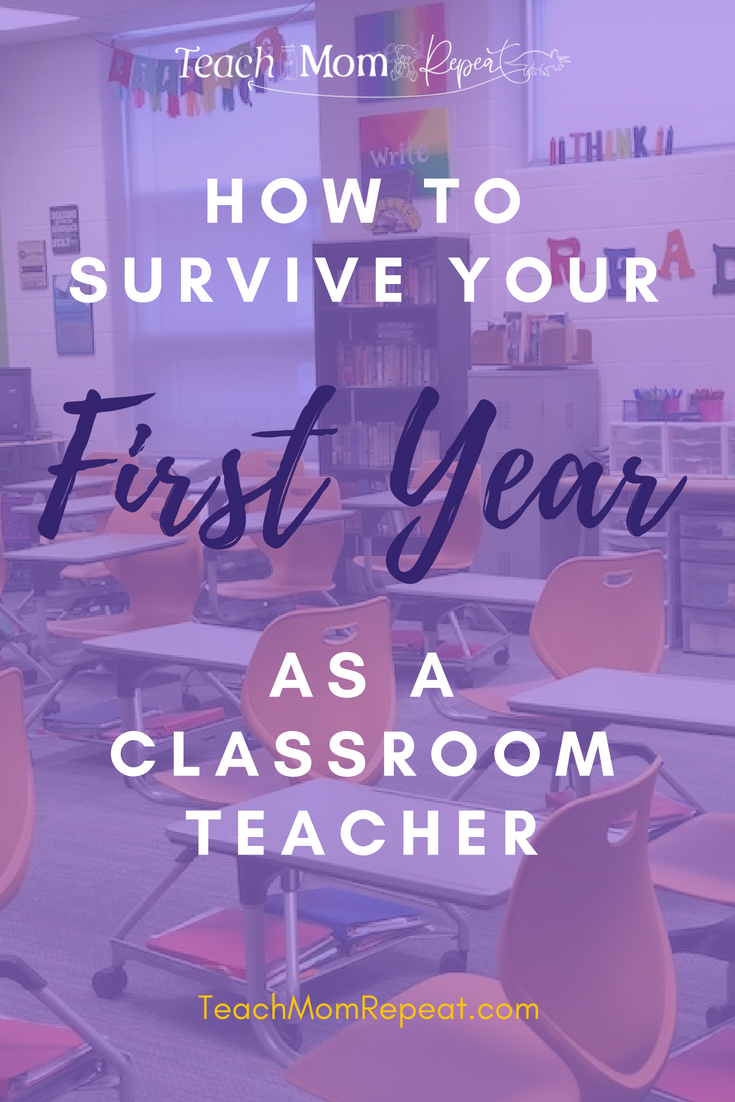
If I could go back in time to tell myself a few things I’ve learned along the way here is what I would want to share:
- Find positive people: Being a teacher is hard work. There always seems to be a lot of work and many situations that we just don’t know how to navigate until they are happening. I’m sure you’ve read all about the teacher’s lounge and the complaining that happens there. Sometimes you will need to vent or talk through a situation without needing to filter because maybe you are a verbal processor. Find someone you can trust to be kind to you, to encourage you. You do not want to find someone who will jump into the pit and make the mud bath deeper. You’ll need to be pulled out of the trench at some point in this first year, and that’s perfectly ok, just be sure you have a friend with a ladder.
- If it doesn’t work admit it and move on: There will be other teachers to support you, give you great ideas, share their best practices. Plus you have all those plans you created in college, right? Yes, and no. Sometimes things look better on paper, or sometimes a person creates a great plan that works for them; it’s ok if it doesn’t work for you. In the world of teaching, we educators understand the meaning of flexibility. Kids are different every year, so what may have worked with one group doesn’t mean it’s going to also work with the next. Don’t waste time on something that isn’t working. Take the time to see what you might be able to tweak, but if that doesn’t help then ditch it and move on to something that will work.
- Beg, borrow and steal: If only social media had been around when I first started teaching! The ideas that are now available are innumerable. Plus, the network of teachers extends well beyond your own district. Talk to the teachers around you to find what works for them, check Pinterest (but don’t get caught up in comparison), start following teacher Instagramers and hashtags (#teachersfollowteachers). You will find what works for you and your class of kids. It may take a few trials, but it will happen.
- DO NOT COMPARE YOURSELF TO VETERAN TEACHERS: We have been at this for a very long time, some of us, and it’s taken that long to actually get there. You don’t graduate college knowing all the things we now know. It took the experience with certain kids and families. It took professional development, or new research and lots of trial and error to make our classrooms run smoothly. You’re coming in with a whole lot of head knowledge, so be sure to soak up the heart knowledge that will help build your career for years to come.
- Finally, don’t try to do it all: Several years into my career I decided Saturdays belonged to me. Since I was single for most of my career I would think nothing of spending time in the classroom grading papers or making new lessons all weekend long. That didn’t make for a very happy social life, and it most certainly did not give me balance. Find your balance! Your career does not define who you are, especially when you serve so many roles in life. Don’t forget to be the other important parts.
This advice is probably great for all of us to be reminded of as the new school year approaches. With high-stakes testing at our heels, it can be a daunting task to feel successful. Remember that we teach kids, not subjects.
What first-year advice do you wish you could have told yourself back then? First-year teachers, share what advice you hear the most, or what’s the most unique tidbit a teacher has shared?





